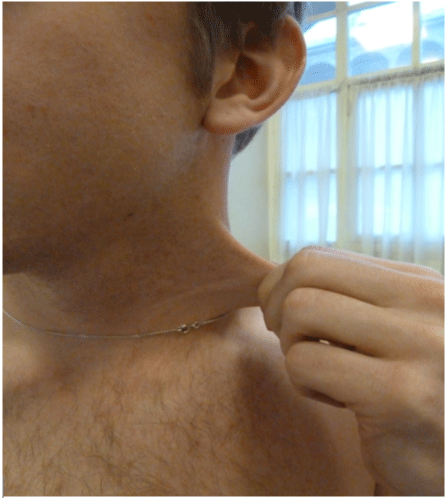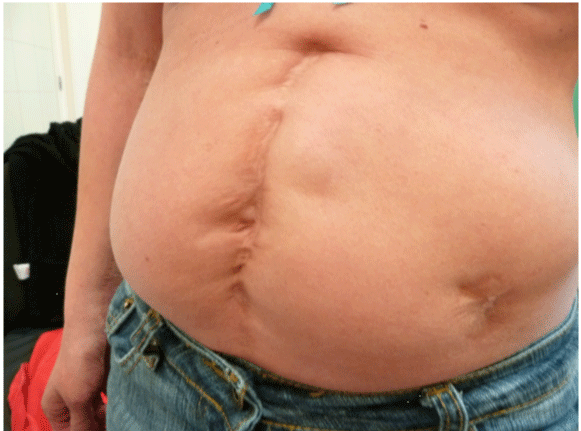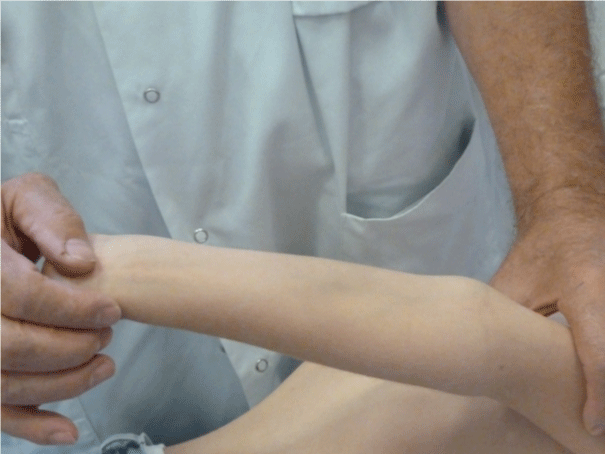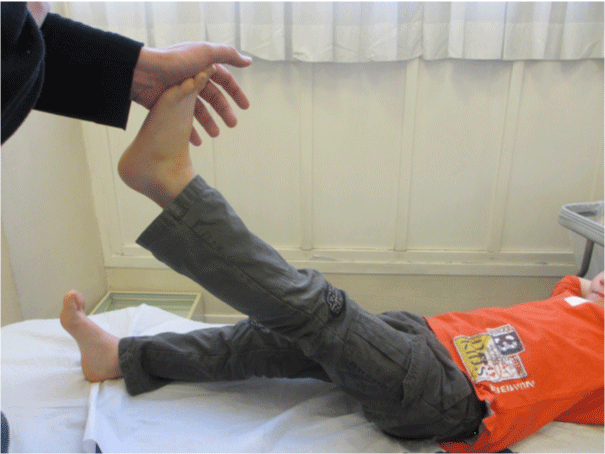Journal of Clinical Research and Ophthalmology
Vision in Ehlers-Danlos syndrome. Role of orthoptics
Claude Hamonet1* and Lucette Ducret2
299 Route des Quatres Vents Lyonnet 74500 Saint-Paul en Chablais, France
Cite this as
Hamonet C, Ducret L (2022) Vision in Ehlers-Danlos syndrome. Role of orthoptics. J Clin Res Ophthalmol 9(2): 017-021. DOI: 10.17352/2455-1414.000098Copyright License
© 2022 Hamonet C, et al. This is an open-access article distributed under the terms of the Creative Commons Attribution License, which permits unrestricted use, distribution, and reproduction in any medium, provided the original author and source are credited.Ehlers-Danlos disease, usually called Ehlers-Danlos syndrome, is an inherited connective tissue disorder that spares the central nervous system except in its connective component. It is manifested by a set of symptoms and clinical signs which are the expression of the connective tissue’s frailty. Visual manifestations are explained by tissue’s fragility and proprioception disturbance increased by muscle dysfunctions: cornea’s fragility, photophobia, diplopia, blepharospasms, eyelids’ retractions, myopia, and astigmatism. The orthoptist’s role is to help in the prescription of prism correction rather than rehabilitation, which is ineffective. In combination, global effect treatments, in particular for dystonia, and dysautonomia… is essential in this frequent disease, poorly described and therefore very seldom diagnosed. It is transmitted to all the children of an affected person. The objective of this work is to contribute to the diagnosis of Ehlers-Danlos disease more often and more frequently in affected families. The orthoptist's role is very important because the correction of diplopia has functional consequences. Pine-hole glasses may give some relief by filtering out the light that dazzles these patients significantly.
Introduction
Ehlers-Danlos disease, usually called Ehlers-Danlos syndrome, is an inherited connective tissue disorder that spares the central nervous system. This article aims to spread more knowledge of a common disease very rarely diagnosed, or diagnosed very late. It is characterized by a set of symptoms and clinical signs which are the expression of the connective tissue’s frailty. The best known are the joints’ hyperlaxity and the skin’s stretchability. They have been sketched out by the first authors who gave their names to this disease: Tschernogobov in Moscow in 1891 [1], Ehlers in Copenhagen in 1901 [2] and Danlos in Paris in 1908 [3]. These two signs, especially hyperlaxity, incorrectly called hypermobility, continue to be the best known among doctors. They often make hyperlaxity a necessary condition for diagnosis, in fact, hyperlaxity can be missing and even be replaced by muscle retractions which are also one of the signs of Ehlers-Danlos disease, including in children [4]. Hyperlaxity is also difficult to measure in these patients who are very painful during passive mobilizations.
Never or very seldom diagnosed, Ehlers-Danlos disease is falsely qualified as fibromyalgia, Marfan disease, Lyme disease, ankylosing spondylitis, rheumatoid arthritis, osteoarthritis, multiple sclerosis, epilepsy... In spite of the nervous system’s integrity, which is programmed to react to signals through the connective tissue, the many symptoms of Ehlers-Danlos disease can largely be explained by dysproprioception. The contribution of neurophysiology and anthropology with Alain Berthoz [5,6], is essential by highlighting the role of the "sense of movement" or "kinesthesia", a real sixth sense, which is constantly present during the production of voluntary or automatic movements and helps to coordinate them. This three-dimensional perception (internal body, external body, and environment) found its biochemical explanation in the work of Ardem Patapounian [7], who obtained, along with David Julius [8], the Nobel Prize for Medicine in 2021. He demonstrated the existence of chemical reactions that trigger the process of stimulation of two types of proprioception sensors, one internal (piezo 1) and the other external (piezo 2). At the same time, David Julius made the same discovery with the thermoregulation’s sensors, thus completing the physiopathological and "organic" explanations of clinical manifestations which do not come from the patient’s imagination but from a particular mode of perception of their own body’s sensations "the perception of oneself”.
These "distorted" perceptions of the body and the body's environment are responsible, along with the tissue fragility symptoms, for the clinical expressions of Ehlers-Danlos disease. These perceptions may be absent, localized, or more extensive anesthesia (sometimes of a whole limb or of a hemi body leading to confusion with neurological damage). At other times, it is more diffused and concerns a larger part of the body, which is then the seat of a “pseudo paralysis” with the impossibility of controlling voluntary movements. It is one explanation of diplopia‘s mechanism. The sensations can be exaggerated by contact, mobilization, or spontaneously, with very diversified pain, often described as excruciating and difficult to relieve. Sudden involuntary movements are frequent, revealing dysautonomia with impaired control of automatic movements (Parkinsonian syndrome) and noises (tinnitus). Smell and therefore taste are altered.
The misinterpretation of these symptoms leads to diagnoses of neurological diseases already mentioned but, above all, almost constantly in our experience of 6,450 diagnosed cases, of psychological disorders: autism, bipolarity, depression, hyperactivity, or schizophrenia. Excessive psychiatric hospitalizations with dramatic consequences are common. The negativity of biological testing and imaging contributes to supporting a psychiatric diagnosis for the children or their parents. This can lead to withdrawals of their children for false accusations of abuse or Munchausen disease [9] i.e., the desire to persuade doctors that they themselves or their children (“Munchausen by proxy”) are suffering from multiple imaginary pathological problems.
Alterations of visual functions in Ehlers-Danlos disease
The eye is made of connective tissues: cornea and lacrimal glands, lens, vitreous humor, retina, and eye muscles are all concerned. Diagnosis can be difficult because of the patient’s interpretation of his own symptoms: Difficulties encountered, particularly visual difficulties exist since birth and these patients do not have the possibility of comparing their sensations with a previous state of reference. In addition, their symptoms vary from moment to moment and it is not easy for them to give an accurate description of what they feel, which is distorted by dysproprioception.
Photophobia is constant in our cohort of patients. It mainly concerns artificial lights, headlights of passing cars at night, neon lights but also solar lights. The cornea’s thinness, which is sometimes noticeable by its bluish appearance, especially in childhood, is responsible for not filtering the light rays sufficiently. Frequent dry eye due to lacrimal gland insufficiency further accentuates this phenomenon. Blue light filters applied to computer screens, laptops, and glasses have a protective effect as we observe in patients. Sunlight-filtering glasses are also effective and so are Pine hole glasses which may give some relief by filtering light. The use of artificial tears is an additional help. In some cases, lacrimal hypersecretion is observed.
Myopia is frequent, early, most often moderate, and not very progressive with regressions or variations that surprise ophthalmologists. Early presbyopia is possible. A dissociation between the two eyes can be observed. Bifocals are poorly tolerated.
Astigmatism is constant in our patients, moderate, well-corrected, and not progressive.
Myopia and astigmatism are well corrected by ophthalmologists whether or not they have made the diagnosis of Ehlers-Danlos.
Very exceptionally we encountered serious retinal complications with optic atrophy or retinal detachment. Retinal hemorrhages are possible in this disease, one of the characteristics of which is the vessels’ fragility and the very high frequency of hemorrhages. Besides these complications, there is the risk that their discovery will be used to wrongly diagnose hemorrhage in a “shaken baby” with the removal of the child from his parents, this type of hemorrhage is wrongly considered as specific abuse.
Cornea’s frailty must be emphasized leading to very difficult healing traumas and risk of cornea ulceration with loss of vision as we observed in a child who lost sight in both eyes by ulcerations following his sister playfully throwing sand. Rigid lenses are therefore contraindicated and any eye irritation should be treated immediately.
Cataract does not appear particularly frequently or early. It must be treated with caution because of the risk of hemorrhage and the cornea’s frailty.
Eyelids may be narrowed, limiting the field of vision. Surgery may be necessary with precautions, using non-absorbable sutures left in place long enough because of the significant delays in healing.
Diplopia is common. It is brought to light by interrogation and a clinical examination of the elementary convergence. 68 of our last 100 patients examined suffered from diplopia. Present from birth, it is often observed and re-educated in childhood. Like the other symptoms of Ehlers-Danlos disease, its expression varies and it may be necessary to repeat the examinations to better objectify it. It is more important during periods of “crisis” as well the fatigue which is often attributed to diplopia. It causes visual fatigue often accompanied by retro-orbital pain or headache. Blurry vision is accompanied by a "shift" of lines when reading a text, a usually moderate duplication of images that can be clearer in a sideways glaze. Diplopia could play a role in some patients’ difficulty in recognizing faces which, alongside often observed working memory disorders, are reported by a number of patients.
Moreover, there are changes in the visual field with collisions with objects or people, and collisions while driving, especially in reverse gear. A simple test makes it possible to objectify convergence disorder by asking the patient to fix the tip of his finger placed on the tip of the nose. The physician observes the parallelism of the eyes’ movements and asks the patient if he perceives a duplication of his finger.
The orthoptist confirms the diagnosis and assesses its characteristics to allow the appropriate correction to be put in place. Wear of corrective glasses with prisms appears to be the most effective therapeutic choice which may require a period of proprioceptive adaptation.
In our experience, orthoptic rehabilitation is not the solution: it can be poorly tolerated, trigger pain and temporarily accentuate visual difficulties. It is often without effect, and in any case, without lasting effect.
In a few cases, we observed a significant difference in the visual acuity of the two eyes, which could go as far as blindness in one eye, a major consequence of the functional dissociation of the two eyes.
Another help is the use of pinhole glasses. They improve visual acuity, Depth of focus, and accommodative amplitude; however, they result in decreased visual quality including general reduction of Visual Field sensitivity, contrast sensitivity, and stereopsis. Therefore, particular attention is needed when wearing pinhole glasses while driving, playing sports, or working with instruments. Due to these patients’ frailty, it is advised to use them in short sessions but in our experience, they improve proprioception and visual acuity [10].
Dissociation of head and eye movements
The poor quality of coordination between the head and the eyes’ movements is an additional factor of dysproprioception and difficulties in harmoniously apprehending the position of the body in space. This is what Leonardo da Vinci very well perceived by representing Mona Lisa. This particularity contributes to the smooth and expressionless aspect of her face, a consequence of supple skin and reactive facial muscles, which give her this so particular famous smile [11] Figure 1.
The relationship between vision and cognitive functions
The sensory disconnection between the nervous system and the rest of the body is the cause of cognitive disorders that are observed in all patients with Ehlers-Danlos syndrome. These are working memory difficulties, and attention and concentration disorders related to mental hyperactivity. Vision disorders are intertwined with them. This is the case for spatial orientation due to the poor quality of the images recorded during the first passage in a place, making recognition difficult during a second passage, even if this second passage occurs soon after the first. This can be observed within an apartment, however familiar. The difficulty of reading and detailed perception of objects and people contribute to the expression of attention disorders.
The signs that allow the diagnosis of Ehlers-Danlos disease or syndrome
These are clinical signs, the grouping of which is characteristic [12]. Genetic tests for this hereditary disease are often negative or controversial. They cannot, today, replace the clinical picture which has largely proven its worth and makes it possible to set up a screening, prevention, and therapy.
The presence of five of the following nine clinical signs is sufficient to diagnose Ehlers-Danlos disease
- Multiple pains: They are diffuse (joints, skin, thorax, abdomen, uterus, migraines, tinnitus, and dazzling). They are permanent with painful access sometimes localized (sensation of "stab wound", penetration of a striking hot iron, tearing or brutal crushing, electric shocks, or bursting sensation, etc.). They vary from day to day and from moment to moment in the day.
- Constant fatigue: It is considered by many patients to be the most disabling symptom. It is not related to lack of sleep, even if the patients complain of non-restorative sleep, and appears more like the proprioceptive “sensation” of fatigue or exhaustion, rather than the fatigue of bodily origin.
- Diffuse bleeding: They are linked to the capillaries’ fragility and probably to that of the platelets and not to a coagulation disorder. These are bruises, gingivorrhagia, epistaxis (especially in children), menorrhagia, metrorrhagia, and intestinal and urinary bleeding Figure 2.
- Thin, smooth, stretchable and fragile skin: Excessive stretching of the neck or arm is a historical and known sign. To this must be added softness of the skin on contact, skin transparency objectifying the venous networks, abrasions, healing difficulties with unsightly scars, the importance of stretch marks, absence of wrinkles, and smooth appearance of the face giving a youthful look. Feeling an electric shock sensation when touching a car door, shopping trolley or another person's skin is a common sign of this thin skin Figures 3,4.
- Joint hyperlaxity: Concerns all the joints and particularly the shoulders, as shown by Cypel’s test [13], which makes it possible to obtain a passive abduction of 120 degrees by blocking the scapula Figure 5. Muscles Retractions in children are also one of the signs of Ehlers-Danlos Figure 6.
- Dislocations and sprains: They mainly concern shoulders, knees, ankles, and fingers. It can be simple articular cracks without gravity for articular wear and are a sign of subluxation.
- Motor disorders, by proprioception or sixth sense impairment: Involuntary doors or furniture knocking, dropping objects, falls.
- Hyperacusis: Is responsible for hearing discomfort but also for exceptional hearing acuity, often with “perfect pitch” and a gift for music.
- Gastroesophageal reflux with bronchial damages: The observation of these signs in the family (ascendants, collaterals, and descendants) constitutes proof of their hereditary nature and contributes to the diagnosis.
Provisional conclusions
Ehlers-Danlos syndrome appears today as a hereditary disease, transmitted to all the children of an affected person, whose high frequency remains unknown due to incomplete or erroneous descriptions. Visual symptomatology appears to be an important cause of disability situations. Treatments and particularly diplopia treatments play an important role in this complex pathology often rebellious to therapeutic approaches. Its discovery in a child should evoke the diagnosis and seek other signs that lead to the diagnosis and screening of other family cases [14].
- Tschernogobow NA. About a case of cutis laxa. Presentation at the first congress of the Moscow Society of Dermatology and Venerology. 1991. Publication in the monthly booklets for practical dermatology, Hamburg. 1892; 14:76.
- Ehlers E, Laxa C, Zu N. Haemorrhages in the skin, loosening of several articulations. Dermatological Journal. (Case for diagnosis),1901; 8:173-174.
- Danlos A. A case of cutis laxa with tumors by chronic contusion of the elbows and knees (pseudodiabetic juvenile xanthoma of MM and Macé de L'épinay). Bull Soc Fr De Dermatol Et Syphilligr. 1908; 19: 70-72.
- Hamonet C, Ravaud P, Villeneuve S, Gompel A, Serre N, Fredy D, Deparcy D, Mazaltarine G, Zeitoun JD, Métlaine A, Léger D, Benachi A, Cordier AG, Césaro P, Loche C, Dantchef N, Vienne M, Séjourné C, Gogly B, Landru MM, Moussa Badran M, Raffray Y, Challe G, Ehlers-Danlos MJ. Statistical study of the symptoms and signs of 644 cases with a Beighton score equal to or greater than 4/9. First International Symposium on Ehlers-Danlos Syndrome. 8-9 septembre 2018, Ghent Belgique.
- Berthoz A. The sense of movement, Odile Jacob, Paris 1997.
- Berthoz A. Vicarience, the creative brain of the Worlds, Odile Jacob Sciences Paris 2021.
- Woo SH, Lukacs V, de Nooij JC, Zaytseva D, Criddle CR, Francisco A, Jessell TM, Wilkinson KA, Patapoutian A. Piezo2 is the principal mechanotransduction channel for proprioception. Nat Neurosci. 2015 Dec;18(12):1756-62. doi: 10.1038/nn.4162. Epub 2015 Nov 9. PMID: 26551544; PMCID: PMC4661126.
- Saotome K, Murthy SE, Kefauver JM, Whitwam T, Patapoutian A, Ward AB. Structure of the mechanically activated ion channel Piezo1. Nature. 2018 Feb 22;554(7693):481-486. doi: 10.1038/nature25453. Epub 2017 Dec 20. Erratum in: Nature. 2022 Jul;607(7919):E10. PMID: 29261642; PMCID: PMC6010196.
- Bocquet N, Boileau P, Castanet M, Gautier L, Lamboley G, Richard E. Le syndrome de Munchausen par procurationMunchausen syndrome by proxy. Archives de Pédiatrie. 1997; 4: 770-778.
- Kim WS, Park IK, Chun YS. Quantitative analysis of functional changes caused by pinhole glasses. Invest Ophthalmol Vis Sci. 2014 Aug 12;55(10):6679-85. doi: 10.1167/iovs.14-14801. PMID: 25118263.
- Hamonet C, Ducret L. Was Mona Lisa affected by an Ehlers-Danlos Syndrome? Int J Proteom Bioinform. 2019; 4(1): 027-030
- Hamonet C. Ehlers-Danlos Syndrome (EDS) - Contribution to Clinical Diagnosis - A Prospective Study of 853 Patients. EC Neurology. 2018; 10.
- Cypel D. Gleno-humeral abduction measurement in patients with Ehlers-Danlos syndrome. Orthop Traumatol Surg Res. 2019 Apr;105(2):287-290. doi: 10.1016/j.otsr.2018.12.007. Epub 2019 Mar 15. PMID: 30885819.
- Hamonet C. Ehlers-Danlos, the disease forgotten by medicine Ehlers-Danlos the disease forgetten by medicine. Harmattan, Paris. 2019.

Article Alerts
Subscribe to our articles alerts and stay tuned.
 This work is licensed under a Creative Commons Attribution 4.0 International License.
This work is licensed under a Creative Commons Attribution 4.0 International License.







 Save to Mendeley
Save to Mendeley
